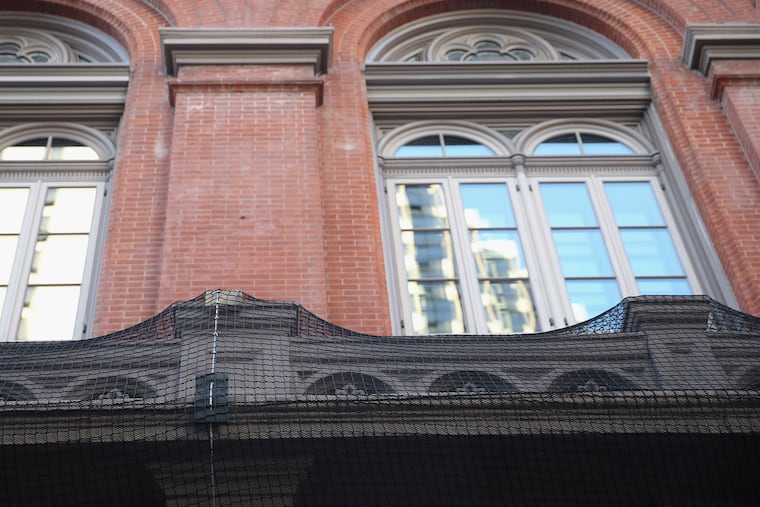At Academy of Music, the sky is 'spalling’: Netting now in place to protect patrons and passersby
Philadelphia Orchestra president and CEO Matias Tarnopolsky said the netting is a safety precaution outside historic building, which the orchestra owns.

A web of black netting has been wrapped around the balcony on the Broad Street facade of the Academy of Music, a precautionary measure to protect passersby as well as opera, dance, and Broadway-show patrons walking up the steps of the building.
The netting started going up Tuesday and more will be installed over the Locust Street-side balcony in coming days, said Matías Tarnopolsky, president and CEO of the Philadelphia Orchestra, which owns the Academy.
Architects had found “spalling” of exterior materials — chipping or splintering — “which means when water infiltrates, fragments can then fall,” said Tarnopolsky, who described the move as a preventive safety measure. The balcony hangs directly over the Broad Street steps most audience members use to enter the building.
The spalling was light in some areas and more severe in others, said Sam Olshin, principal of Atkin Olshin Schade Architects, a consultant for Academy restorations. Surfaces have been patched temporarily, and the netting was put into place to protect the public from any falling debris.
“It wasn’t a structural failure,” Olshin said, “but we wanted to make sure it doesn’t become a structural failure.”
The decision to put up the netting grew from a consensus developed by several consulting firms in the last couple of months, he said.
Over the years, the building had been patched with various synthetic coatings — some applied perhaps as early as the 1950s, he believes — without the ability to contract or expand with temperatures. Gaps and fissures formed, and water entered the building’s original materials.
The netting will stay up until a larger weather-sealing and exterior restoration project at the Academy can be undertaken, Tarnopolsky said.
That project includes the weather-sealing, restoration, or replacement of surface materials like brick and brownstone, along with repairs to the roof, the cupola, and the elaborate cornice near the top of the historic building.
The timing for its start is still uncertain. “We are still working to determine the cost,” Tarnopolsky said of the larger project. Once the cost is known, funding can be sought. Once funding is committed, a timeline can be developed.